Staying at Ruboni Community Camp gives you an opportunity to explore one of Uganda’s most beautiful rural communities. Ruboni is not just beautiful; it’s also a model for sustainable tourism in Uganda’s Albertine Rift Valley, an area of ecological wealth that’s hard to find anywhere else in Uganda.
Are you looking to travel green or counter your travel carbon footprint in simple and pleasurable ways that give you a full experience of Uganda? I can confidently say that a visit to Ruboni Community Camp answers all your sustainability and travel doubts.
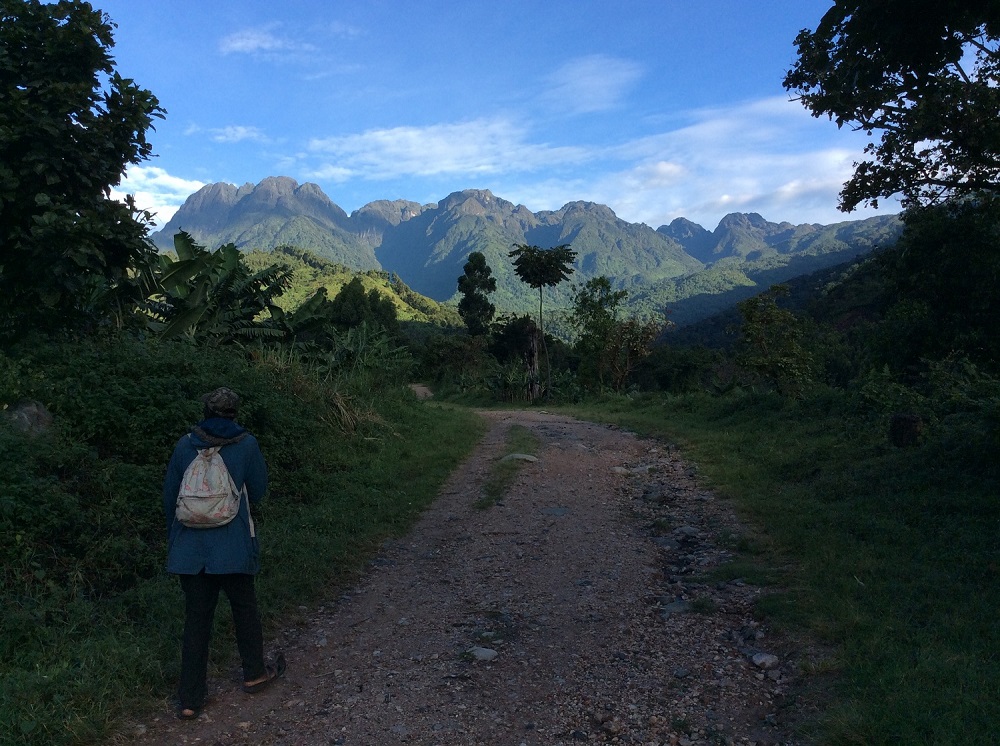
Ruboni Community Camp has been in existence since 2002, making it the oldest community lodge in Ruboni village and the Rwenzori foothills. This makes Ruboni a guiding star for many upcoming community lodges in the Rwenzori region.
Besides the lodge, Ruboni Community has created a community natural forest reserve and other community tourism activities that engage guests who visit the area. These initiatives come with a complete benefit-sharing system developed with the local community involved in the tourism products.
All these activities can be done within a day and night of stay. However, it’s recommended to plan a stay of at least two nights in Ruboni so as to have enough time to arrive, experience, and depart without much pressure.
As part of the Ruboni sustainability success story, the Elephant Home is a sister tourism lodge next to Queen Elizabeth National Park, located 50km from Ruboni Community in a totally different setting. The landscapes, people, and climate are all different. As opposed to Ruboni located in the Rwenzori foothills, the Elephant Home makes an ideal base for wildlife safaris and Kazinga Channel boat cruises in Queen Elizabeth National Park.
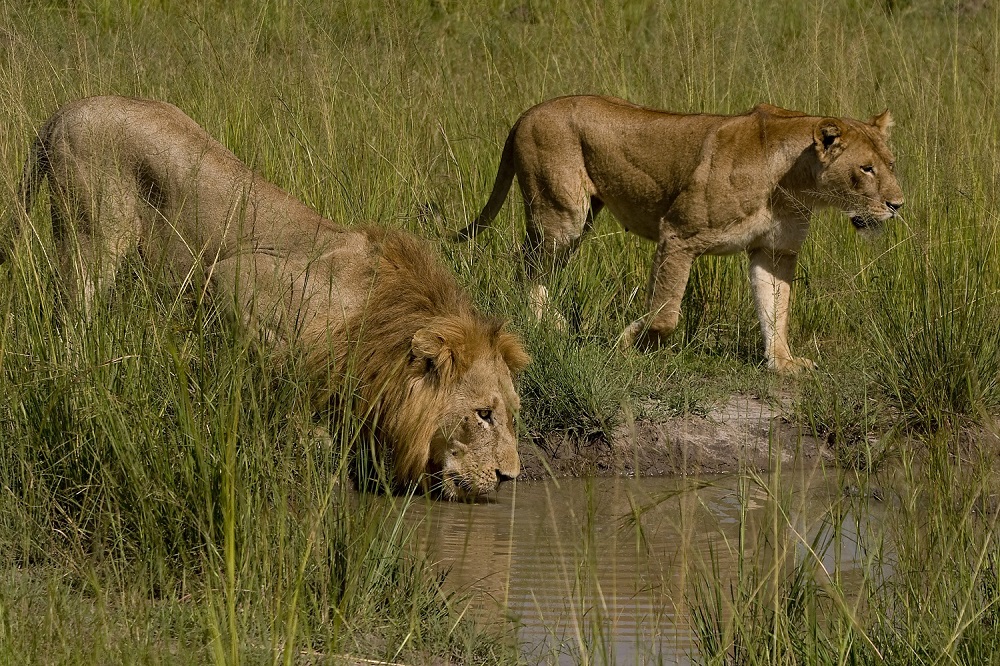
It’s recommended to stay two nights at The Elephant Home to get the best out of your visit. You can view an itinerary for your two-day stay, which gives you an opportunity to explore the main activities inside the park and visit the communities if you like.
These three activities give you a full idea of the medley of wonders in the Savannah of Uganda. They can be done within one or two days if well planned.
Those willing to go off the beaten path will take the opportunity to visit the lower communities or do other wildlife activities, including:
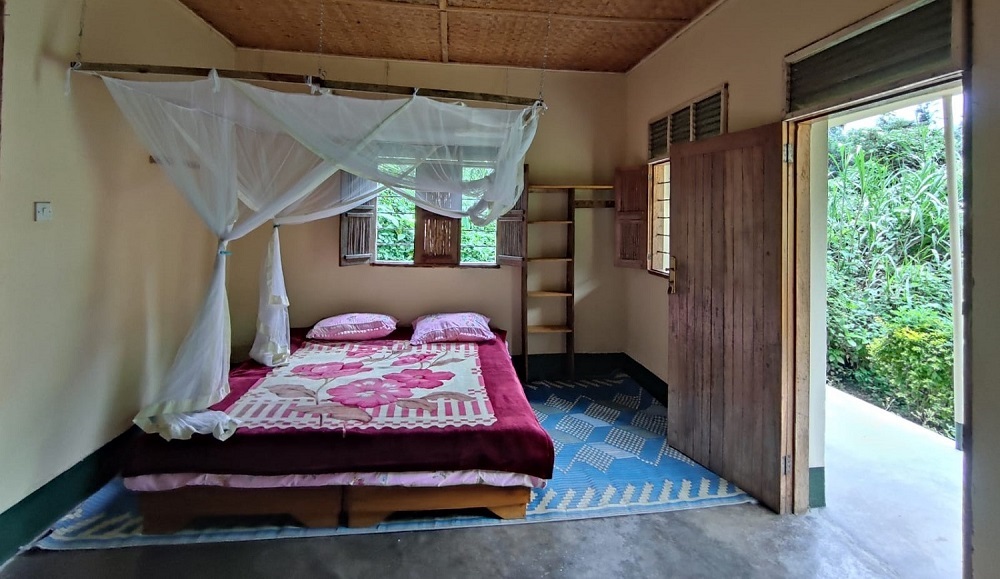
Ruboni is a beacon of social change and environment conservation. Its community development and conservation work are done through tourism. The tourism and conservation interventions offer students, researchers, visitors, and the rest of the local community a clear opportunity for learning and inspiration.
Over the years, Ruboni Community Camp has positively impacted the local people and environment in numerous ways, including:
And many more invaluable benefits that can be learned by interacting with the locals when you visit. This is done by all profits generated by Ruboni Community Camp and its affiliates going back to the local community.
During a visit to Ruboni, guests have a chance to learn from the different projects supported or inspired by Ruboni Community Tourism Initiative. You will realize that the 20-year journey has been rich, as Ruboni has inspired and set examples for community tourism, conservation, and development initiatives around Uganda.
A visit to Ruboni could be everyones opportunity to be inspired and changed by this community tourism initiative started by a group of mountain farmers, yet influencing knowledge and success of all levels of people, from rural farmers to high-level academicians and innovators.
If you can imagine seeing Ruboni 20 years back, you will appreciate seeing The Elephant Home in its current young status. The Elephant Home has been formed as a replication of Ruboni Community Camp when it started 20 years ago.
The evolution of The Elephant Home is almost a reflection of the formation of Ruboni Community Camp 20 years back, when people came together to form this project due to a crisis, lacking an alternative source of income. We have an interesting way for you to be part of this history of Ruboni Community Camp.
The Elephant Home is in its young stages, replicating the best practices of Ruboni Community Camp. Visiting both lodges will be the best way to walk back in life and see the establishment of a community-owned and run tourism initiative working to empower local people and support conservation of the environment.
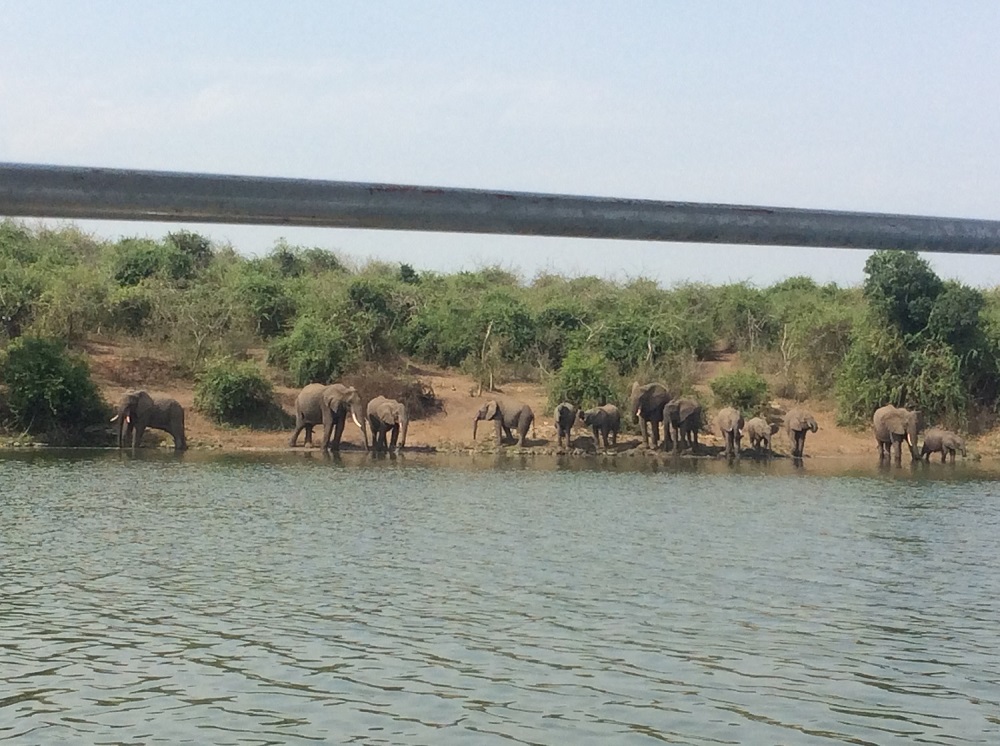
This project is located next to Queen Elizabeth National Park. The Elephant Home Lodge is located in Kikorongo, owned and run by the local community, with full support from the Ruboni team. The lodge currently boasts self-contained rooms, a restaurant, crafts shop, village tours, and is growing!
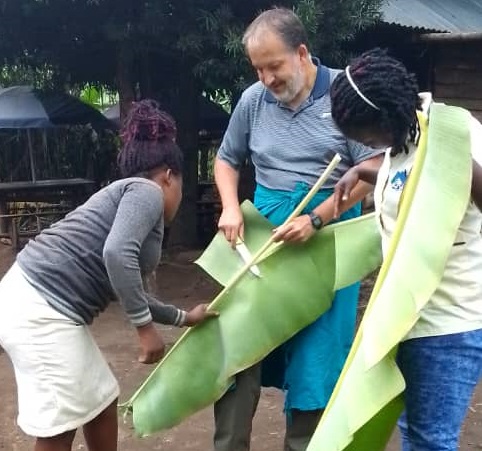
This happens when part of the income generated from both places is invested in sustainability. The sustainable projects being supported are too numerous to mention in this article. A few examples include tree planting, supporting the rural poor, market for local produce, conservation awareness raising, and many others you will find when you visit.
We are curious to know how many you observe during your next visit to these twin community tourism projects. Please share your findings and help this good effort fly higher and continue to shine for sustainability.
We feel it is imperative to shine a light on the people and institutions that supported the establishment of Ruboni Community Camp. Below is the list of supporters who made the establishment of Ruboni Community Camp possible:
You can book your next visit to one or both lodges today, by following this link.
This is probably the best opportunity for travelers who want to experience Uganda’s landscapes and way of life, or people and wildlife, on one trip. Ruboni, and Queen Elizabeth safari experience takes you to two distinct National parks of western Uganda. These two parks are; Rwenzori Mountains and Queen Elizabeth.
You need a minimum of two days to explore these two destinations. The exploration is exclusively through the eyes of the local people, as they share their story and appreciation of the said cultures, animals and landscapes.
Through the village and wildlife tours organized during this visit, you will realize that every plant, animal, hills, valleys and other natural features shape the local way of life. It is indeed an opportunity to learn these, and more as the local guides show you around these rustic villages and park equally shared by the animals and people of western Uganda.
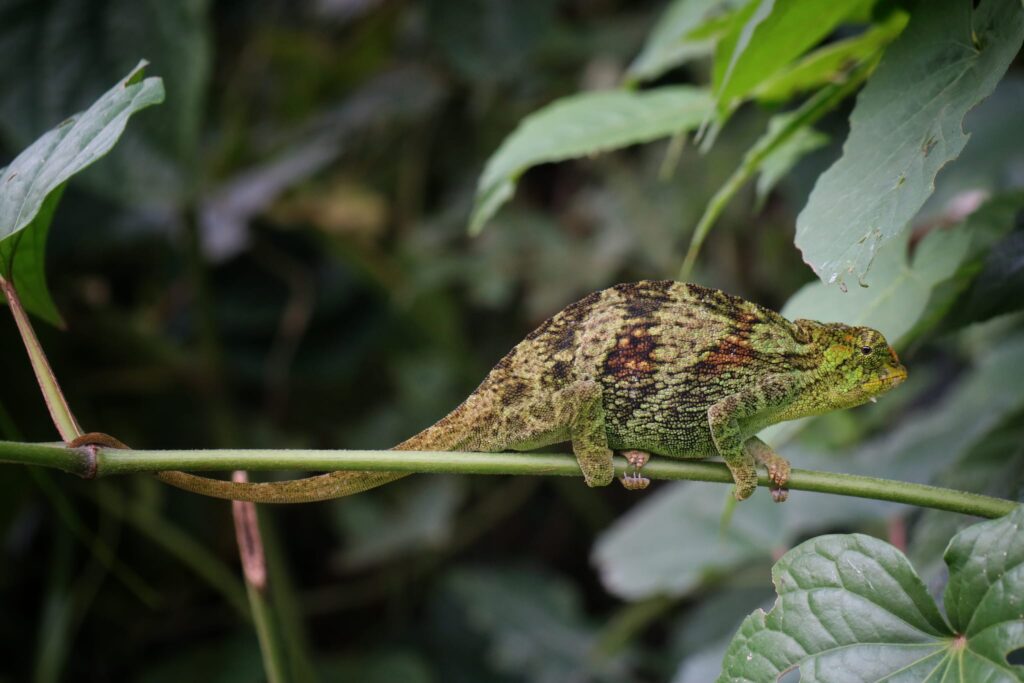
Rwenzori is one of a kind in Uganda, and Africa. With an outstandingly rich habitat, this mountain has recognition of a national park status since 1991. It has acquired two global recognition as a Ramsar site since (2008) and a world heritage site by UNESCO since (1994). Rwenzori mountains is also the highest block mountain on the African continent, and uniquely boasts of snow at the equator.
For these and many other reasons that you will find during your visit, It can not be easy to describe Uganda’s natural landscapes and leave out the charm of these mountains, popularly known ad the mountains of the moon, as named by Ptolemy, the Alexandrine geographer in AD 150.
Queen Elizabeth is a Savannah national park, popular for wildlife safaris on land and on water. The visitors to this park are normal looking for large mammals ranging from the elephants, antelopes, the cats and birds. Generously endowed with a range of ecosystems; salt water lakes, fresh waters lakes, flowing rivers and channels, forests, wetlands, savannah; Queen Elizabeth is home to a large variety of wildlife.
Guests find Multitudes of antelopes, Buffalo, Hippos, lions, leopards, hyenas, roam the Savannah 24/7 all-year round. the list has just a few of the many that you will spot during the magical safaris taken in the several tracks as you view the real Timon and Pumba in the wild.
Can you imagine visiting these two pieces of paradise in a very short time and on a very low budget? This is a dream come true for any body looking to get a real experience of Ugandas nature and culture. Now, through this easy to organize tour , it’s possible to visit Rwenzori Mountains and Queen Elizabeth National Park on one short (2-days) trip.
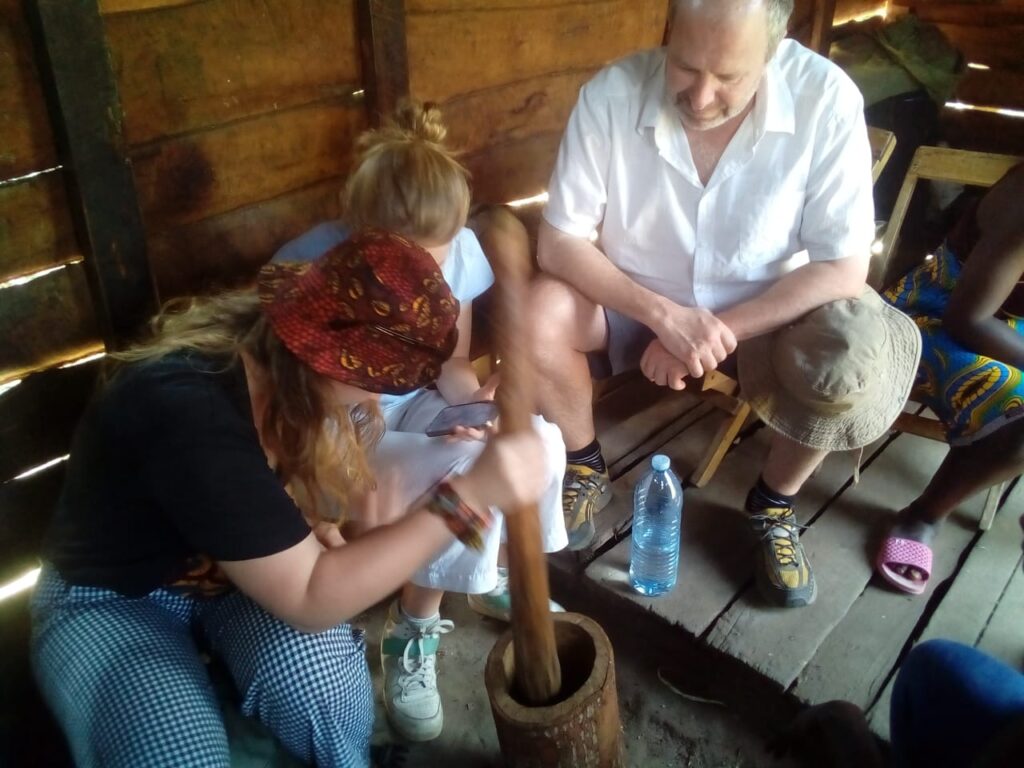
This trip to two National parks includes looking for chameleons, walking in the forests or trekking the Rwenzori foothills, and then doing a wildlife safari to spot the big five in their natural home around the varied habitats and villages of Queen Elizabeth National Park, including Kasenyi tracks and Kazinga channel boat cruise.
Interestingly, you need a minimum of two days to experience this rich combination of attractions in the mountains, culture, scenery, and wildlife safaris. Let’s break it down, and you can see what you’ll be able to experience on this comprehensive trip.
While in Ruboni , the Rwenzori foothills, you have options for a hill trek, forest walk, or one-day nature walk in the Rwenzori Mountains National Park lower slopes. Those interested in culture, can choose from other cultural encounters such as the village walk, traditional dancing experience, traditional cooking experience or the coffee tours. you can also choose to learn how to make wine from bananas.
If you haven’t countered the carbon footprint of your trip, you have an opportunity to participate in a tree planting experience. here you can participate in seed collection, work in the tree nursery, tree planting or tending to the already tree planted gardens in the hills. the money you pay for this tour directly supports tree planting and landscape restoration on the Rwenzori foothills.
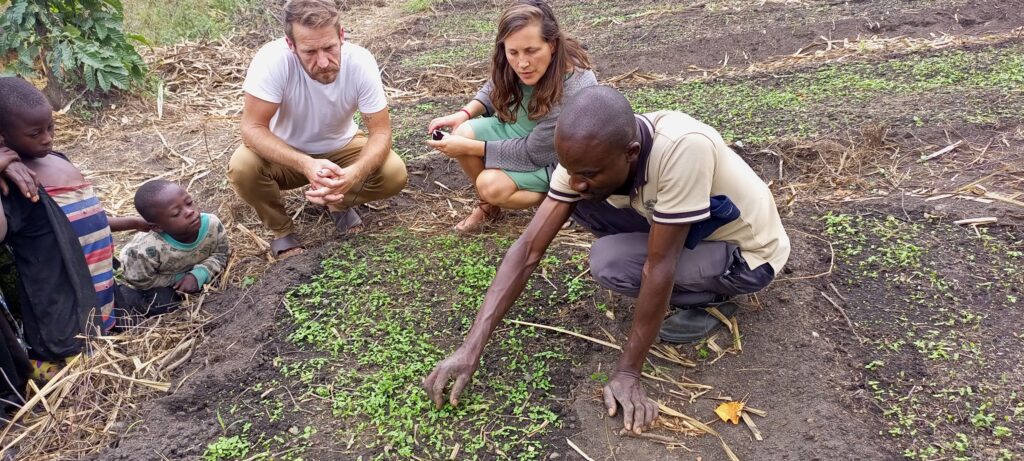
Generally, depending on your interest, what you experience depends on what you choose from the activity menu.
If you choose a forest walk, starting any time of the day (as long as you have 4 hours before dark) you may spot a range of chameleons, including the three-horned, strange-horned (Rhinoceros chameleon), and others. Ruboni Forest is also popular for finding snakes, including the great lakes bush viper. Many guests have spotted the Rwenzori Turaco among the 178 bird species recorded so far. Being adjacent to the park, you have a high chance of finding primates like blue monkeys, black and white Columbus, and sometimes chimps.
On the community hill trek, you start at 1,600 meters and end at 2,300 meters. This trek can also be taken as an overnight trip, spending the night at the top of the hill. The key highlight on the hill trek is viewing Margarita Peak, the highest point on Rwenzori Mountains at 5,109 meters, which is also the highest point in Uganda. This hill trek is an easy way to scale Rwenzori Mountains from base to peak in just one day or night.
On the one-day nature walk inside the park, you trek from 1,600 meters to 2,660 meters above sea level, on the lower slopes of Rwenzori Mountains. Common sights will be the rich Afro-montane forest, primates, chameleons, and mountain scenery.
Most of the time, you will walk under canopy with some open opportunities of scenery to take the mountain views. during the walk, you have chances of spotting wild animals such as chameleons, primates, hear chimp sounds and on a lucky day, you may spot the shy forest elephants. The trek can go up to Lake Mahoma at around 3000m if stretched. Lake Mahoma is the largest and lowest lake of the seven lakes on the central circuit trail of Rwenzori Mountains.
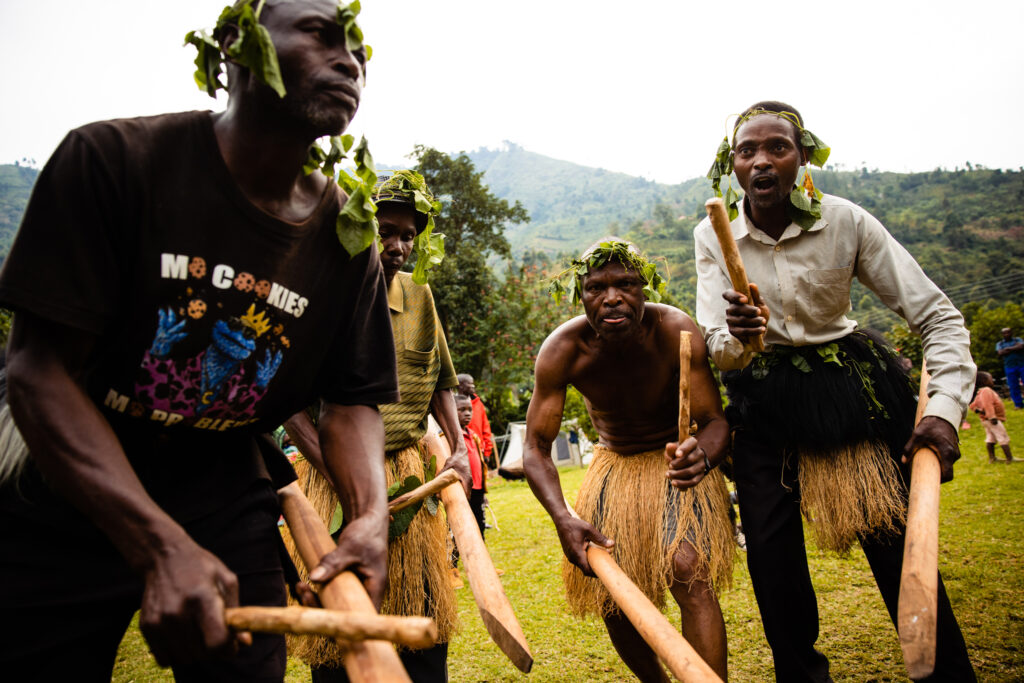
After your chosen experience at Ruboni, in the Rwenzori Mountains foothills, you will be transferred to Queen Elizabeth National Park, involving a 1-hour drive (46km) and checking in at the Elephant Home before embarking on the search for wild animals. The elephant home is another community owned and run lodge whose proceeds go to the local community, just like Ruboni Community Camp in Ruboni village.
We call the Elephant Home a sister community lodge to Ruboni Community Camp, owned and run by the local community, with proceeds supporting conservation and community development in Kikorongo Village near Queen Elizabeth National Park.
Queen Elizabeth National Park offers various wildlife activities. Based on the available time (minimum of one day), you will choose the activity to participate in. The activities take from hours to full days or nights. Besides the activities in the park, you have the village showcasing culture and its relationship to wildlife.
The key activities in Queen Elizabeth are a safari drive in Kasenyi track, Kazinga Channel boat cruise, lion tracking experience, chimp tracking in Kyambura, mongoose tracking, birding watching experiences, tree climbing lions in Ishasha, and a night game drive.
Besides, you have a range of community activities to chose from, including the boda-boda safari, Kikorongo Village walk, agriculture tour showcasing vanilla, coffee, and cocoa growing, village hill trek, the crater lakes tour in Bunyaruguru, traditional dances, Katwe salt mining tour, and the basket weaving experience.
The included activities for this comprehensive trip are the game drive in Kasenyi and the Kazinga Channel boat cruise. However, guests can choose to do different or more activities on the above list. The game drive will take from 6:30 a.m. to 10:00 a.m., and the boat cruise from 11:00 a.m. to 1:00 p.m. The rest of the day, you have a chance to participate in any other activity of your choice, including activities in the community or inside the park.
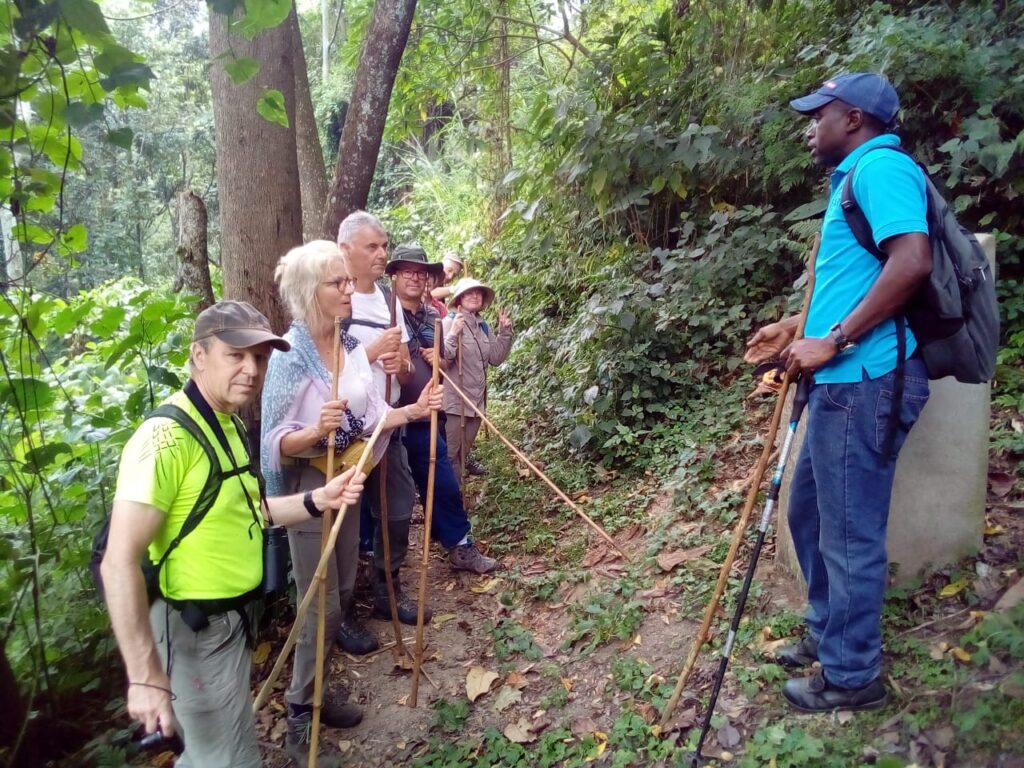
Day 1). Arrive at Ruboni community camp on the day before the tour starts. The arrival can be from anywhere in western Uganda or Kampala. On arrival, clear all the payments by showing any proof of payment for all payments that were done before arrival, clear the balances, get briefing from the guide to prepare for the day as they check your tools and equipment. Dinner and overnight.
Please not that, today you have an option of going for an overnight hill trek to spend a night at 2300m above sea level and get a chance of viewing margarita peak in the mornings, evenings or day time, if the weather is clear.
The adjacent National parks that you can ably travel from to Ruboni within one day are; Murchison falls national park, Semuliki National park, Kibale national park or the cities on the north of Kasese.
Day 2). Today, participate in the Ruboni activitries. Wake to an early breakfast and embark on either the forest or hill trek. Take this tour of choice for 3-4 hours and return to lunch. After lunch, you can choose to visit the people to learn the local trades of the Bakonzo people living in the Rwenzori foothills. The day normally ends with a cultural evening at the community visitors center where you mix with the locals, on the traditional foods, dances and drinks as you learn all the processes of making them.
After the dance, transfer to Queen Elizabeth and arrive to dinner at the elephant home community camp, and sleep to the sound of the lion and hyena in the neighboring savanna as they do their nightly hunt. You will sleep in the northern hemisphere and do your safari activities in the southern hemisphere tomorrow.
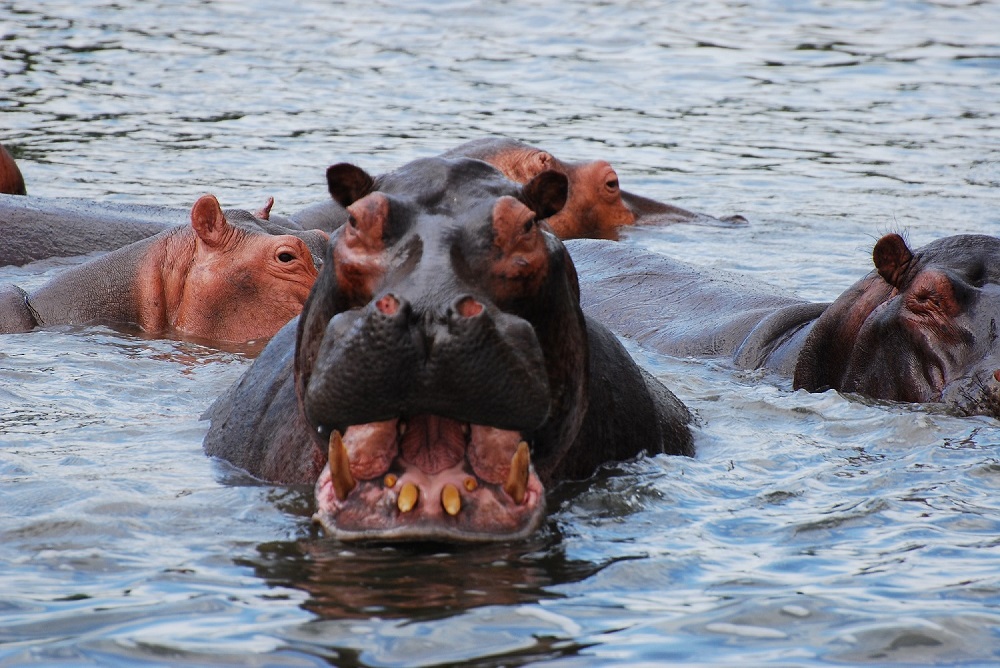
Day 3). Wake up at 6:30 to an early breakfast. You will then start the game drive as the park gates open. This morning you will be looking for varied animals including the cats, buffalo, water buck, cobs, warthogs, elephants, leopards birds and many others in the beautiful Savannah landscape east of lake gorge, south of the equator. during the game drive, you will proceed to the crafts village next to lake Bunyampaka in kasenyi and take the breathtaking views as you shop around this African crafts village.
After the game drive, transfer to Katunguru to participate in the Kazinga channel boat cruise. The boat will showcase wild animals at close rage as they cool off on the banks of Kazinga channel. The animals to look for include; Hipos, crocodiles, antelopes, Bufallo, elephants and multitudes of birds including the migrant species from as far as Europe, during certain seasons.
On the boat, you will also meet the fishing villages and take the true African views of the people doing their daily fishing activity. Return to the dock after two hours and proceed to lunch where you can choose to have the local fish from the local lakes or return for any delicious meal of your choice at the lodge.
This afternoon, you have a choice to participate in the community activities such as Katwe salt mining tour, Kikorongo village walk, the boda-boda safari, the equator experience as you cross over the equator line, or more activities inside the park such as Chimp tracking in Kyambura gorge. The end of the boat cruise is also good time to connect to another destination like Ishasha, Bwindi or Kampala if you have a private car. If using public, it will be better to have another night in queen Elizabeth and transfer tomorrow.

The Bakonzo are the indigenous tribe on the foothills of Rwenzori Mountains. try the traditional cooking tour and you will understand alot about this unique culture. It is an ethnic tribe that extends up to Congo, with the majority of their tribesmen living across the boarder; called the Banande.
The Bakonzo people have a custom of living on the hills. They do all their works up there from farming, grazing, building and some times hunting in those old days.
Visitors to Ruboni always wonder how the people build houses, farm or climb these mountains throughout their life. If you ever wondered how the Bakonzo people cook their daily meals, then this Traditional cooking tour is an opportunity for you to learn and even participate in cooking one or several of their meals. It is all organized in this out-of-the-world cooking experience with the indigenous tribe members.
The Bakonzo being more attached to Congo than to Uganda, their food, dances, language and all other life aspects differ a lot from those of other tribes in Uganda. Their food is unique too. You will understand why doing this cooking experience and other activities. In this 2-5 hour coming experience, the guest will learn how to grow harvest, prepare, cook and eat one local meal. The prices for the experience includes eating on the meal for your lunch/ dinner
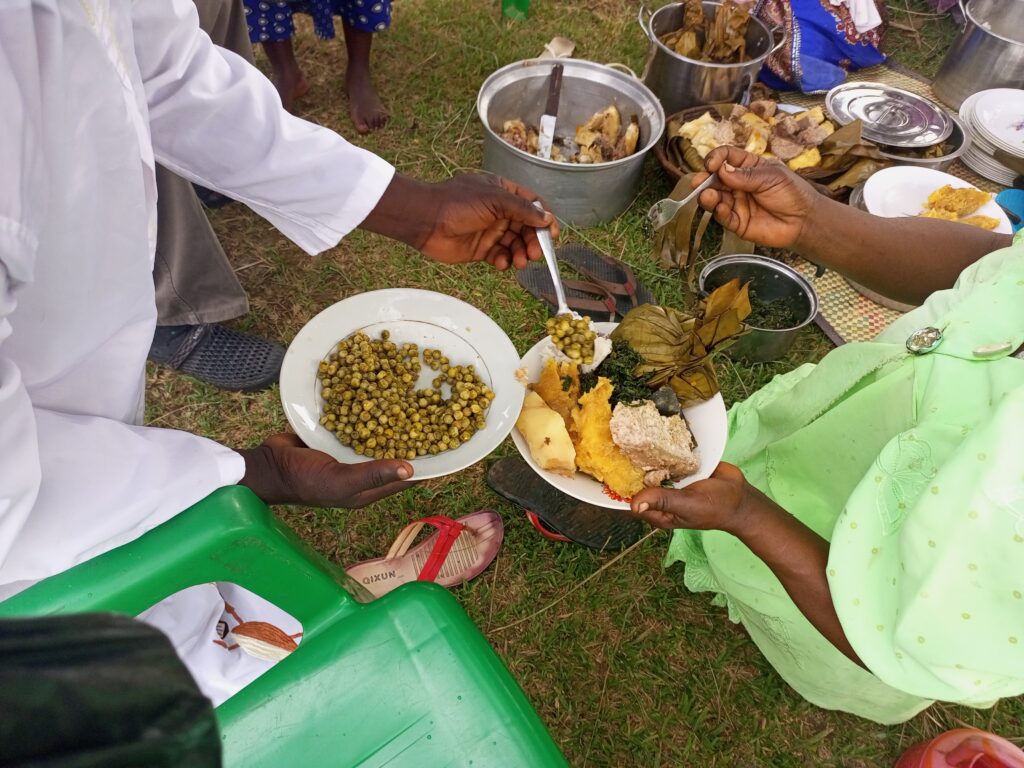
So you know, I want to give you the following hints, so that you have an idea on the Bakonzo foods before participating in the tour.
The staple foods for Bakonzo are;
And the common sauces are;
As the culture has evolved and there has been exchange between other cultures, the Bakonzo now eat all other foods including the rice, Irish potatoes, maize, G-nuts, other fruits and vegetables. As you interact with the local people during the experience, you will also learn that the Bakonzo used to have original varieties of these other foods that were accustomed to growing in the hills without application of chemicals. However, these varieties are no longer common. The local people now depend on growing improved varieties.
None the less, the Bakonzo still attempt to grow most of their food ingredients. With the effects of climate change, some ingredients that cant grow locally at the homes are bought from the next villages or local markets. very little on their daily menu is imported from other countries.
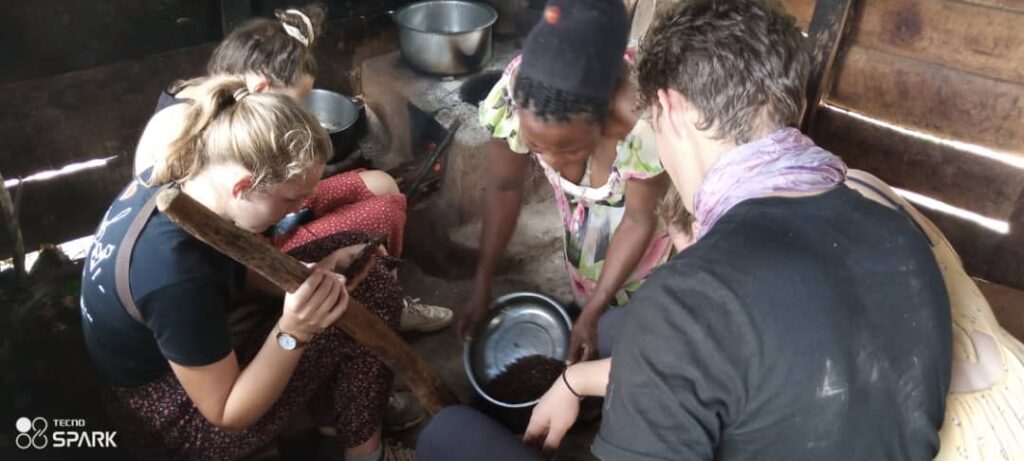
this tour is suited for guests staying in the Ruboni village. it can be done in full or in different levels, the levels include; harvesting, food preparation, cooking or serving the food. all stages are dine in the traditional way including serving the food.
For those willing to participate, it is easy to book this tour. Contact the community visitors center through this website, specifying that you want to participate in the cooking experience. at booking time, it is important to say any specific interest you have in the cooking tour. you can also specify the kind of sauce or ingredients you like to cook. otherwise the chef will select the meal to be cooked based on availability and the information they will have got from you.
the payment made for the tour includes purchase of the ingredients, the experience, participating in the activity, the interpretation and a meal for the person participating. all the inputs of this tour are sourced locally. The money spent on food ingredients, and the services all stay within the community making this experience very sustainable.
Everyone is planting trees as the one best way to combat the global impacts of climate change. Here is an opportunity to participate. In Ruboni Village, we are also planting trees to combat the local impacts such as river floods, landslides, deteriorating soil fertility and famine, habitat degradation and poverty.
On this tree planting experience tour, you will not only learn, but also participate in solving these local problems with the local farmers. It is quite inspirational as you exchange knowledge with the local indigenous peoples response to climate change through tree planting. This is purely not for profit. The revenue from this tour is all spent on tree planting. you can read more on this link
If you have been wondering how you can plant a tree during your travel around Uganda, this post answers all your doubts. Yes, it is possible and you can physically plant trees in Ruboni village without any complication.
If you have any time starting from 30 minutes, and 20 US dollars, you can plant up to 50 trees. Besides, campers can get free camping in a secure and clean ground with toilets and showers as part of the price, just to pay for meals. This enables you to come and visit or stay to plant trees at only 20USD, per person
The campground where tree planters stay has a local restaurant where you can buy local food. for those who want to comfort accommodation, you can stay at Ruboni community Camp, or choose from the many lodges in Ruboni village, ranging from luxury to shoe string.
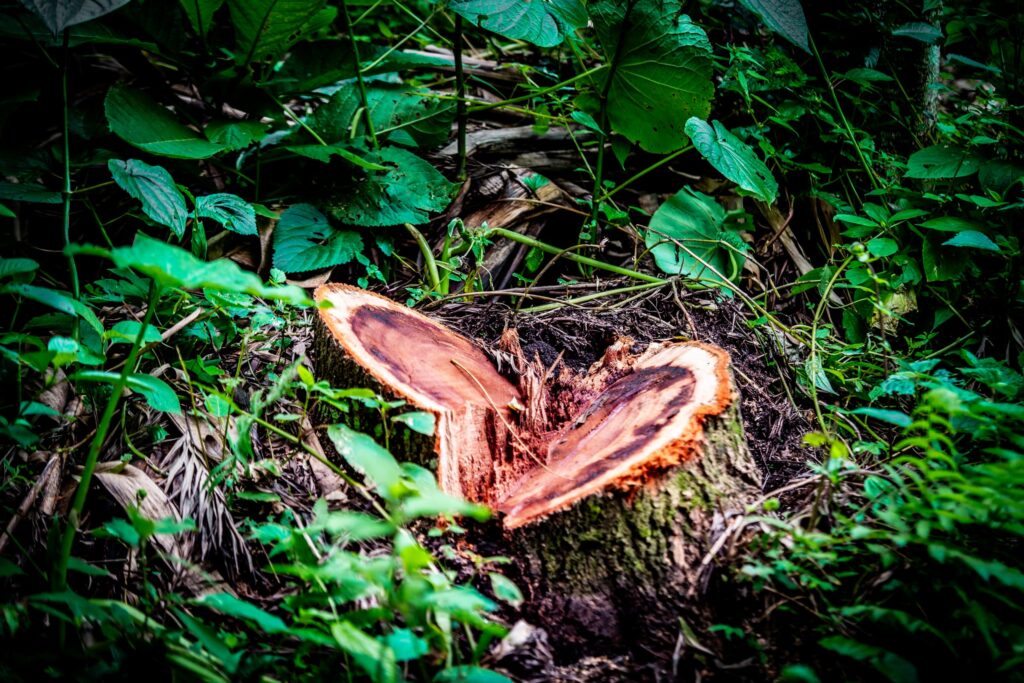
This hands-on tree planting experience is your ultimate way to contribute to offset the carbon footprint of travel and other human activities. It has been well organized, that anybody can plant trees. The seedlings are ready, the guide waiting to take you and the garden already prepared by the farmers. No forms need to be filled or any bureaucracy.
Even the shortest time available on your trip schedule will allow you to participate in tree planting. Yes, this is a rural community way and yet the most successful way of planting trees. We are restoring the degraded landscapes, and you will have a chance to contribute to this restoration movement. Besides the planting of trees, you will definitely learn a lot, from the conservation experience Ruboni Village has acquired over 20 years.
For us to succeed in restoring mother earth, We just need to go out and plant trees, and this is your opportunity. The only requirement you have is, adding Ruboni village-Rwenzori Mountains, on your trip, and sparing at least 20$ for this activity.
Adding Rwenzori and Ruboni village on your trip is simple. The village is located on your way to Queen Elizabeth National Park from Kibale National park or the other way round. Spare a minimum of 30 minutes in Ruboni village and the hardest part is done.
after adding Ruboni on your trip, Join the community today or when you visit Ruboni village. It is simple, visit, get the tree and plant it on the land that needs it now. Since trees are planted outdoors, you will need to trek during the activity. This walk is covered in the activity price and you wont need any other entrance fees. The distance you trek will depend on your choice. Long or short, high or low.
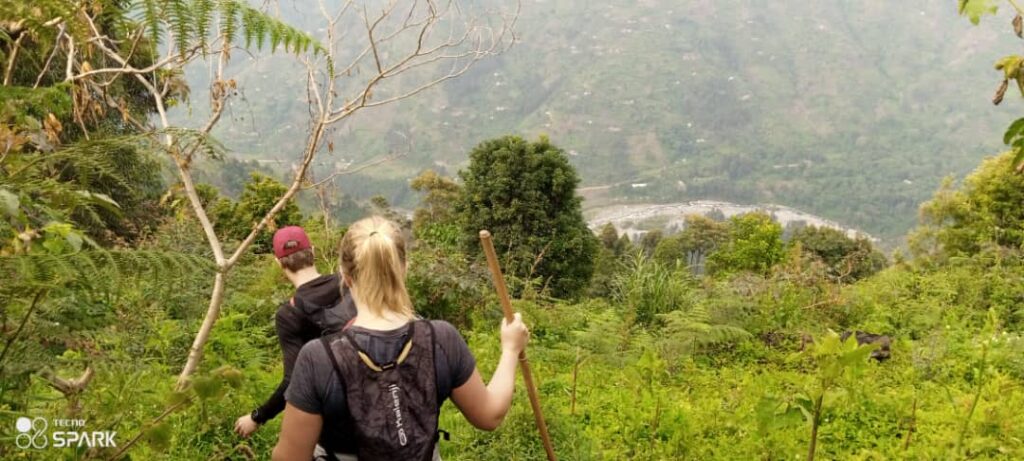
You may trek to the high hills, short hills or on the plains. This all depends on your ability, time and interest. The price for the experience remains the same even when you choose to do the most challenging tree planting adventure. On arrival, our staff will brief you about everything to help you decide on what to do.
You will realize that it is actually very easy to plant trees than you thought when you follow the farmers and plant trees with them in a short time. We have the seedlings ready. You can choose either a tree species that is indigenous to Rwenzori or fruit trees.
Planting trees is a process. This process can be fully done by nature or partially by people and animals. The process starts from the seed, to the seedling, to the garden and to the mature tree. The households and community members involvement determines how successful or unsuccessful the seed will turn into a tree.
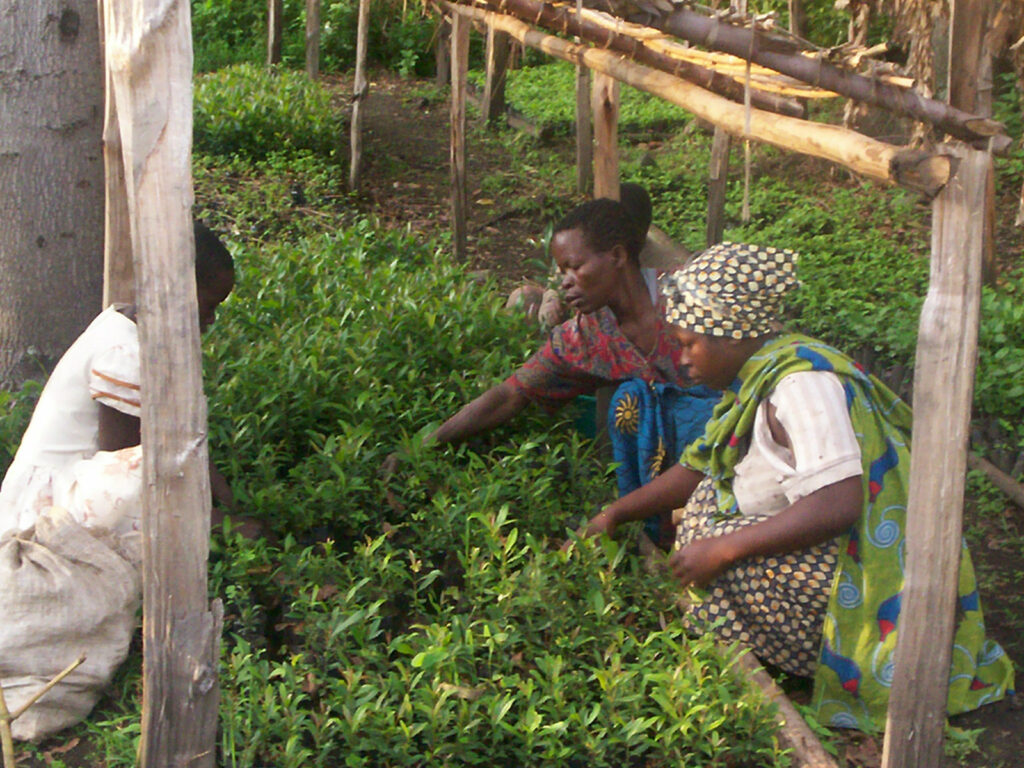
Alongside with the visitors buying this tour, many community members are involved in the tree planting project with or without the visitors. The day to day activities of the tree planting activity include seed collection, nursery preparation, seedlings rising, Transportation of seedlings, tree planting, and tending to the trees for at least three years until they suppress the weeds. You can pay for all these by a single small fee; the price of this tour.
You will meet the community tree planter, who will explain how the people are impacting the environment thought their daily life, and what Ruboni community is doing to mobilize community contributions to the process of tree planting.
As you enjoy the Rwenzori climate and landscapes during the tour, the guide will explain how the landscapes have changed over time. Finally, you will reach the selected garden plant the seedlings and return to your lodge.
The benefits from this tour go back to the local community. All the money paid for this experience is used to facilitate the tree planting activities by paying the labor, transportation, seed collection, buying/ rising seedlings, paying the farmers who have scarified their land for tree planting.
The digital trend in tourism is becoming a real movement. It is taking the show everywhere in the world. This is deep, especially as experienced and young travelers have taken a long leap into technology. As everyone in the tourism world goes digital, Ruboni could not wait to join the movement, by adding her tourist attractions on open Street map.
It was an insightful step of the journey, as Ruboni village members saw the mapping process unfolding for their village, on the Open Street Map. Most tourism stakeholders have been active for a full year, finding, exploring, and posting Ruboni tourism features and attractions on this digital map.
Ruboni is a small village located in the foothills of the Rwenzori Mountains, in Kasese district, Western Uganda. This village is drained by River Mubuku as it flows from the Rwenzori Mountains on its journey to Lake George in Queen Elizabeth National Park then heads to join the Kazinga channel, lake Edward, and Semuliki River heading to join the Albert Nile.
Before the idea of mapping came up, the local tourism players struggled in different directions, trying to increase the visibility of their village in the tourism market. Over the years, road signs have been planted, brochures printed, and websites made. These yielded but only a small margin of guest numbers. The story of Ruboni didn’t get to the world as much as it should.
We know where the reason for none visibility could be coming from. lack of proper pulicity and promotion, that is well answered by the mapping project in several ways. Originally, Ruboni was only known for being The Base Camp for tourists trekking the Rwenzori Mountains through the Nyakalengijo central circuit trail leading to Margarita Peak.
Ruboni Community Camp is the pioneer of community tourism in this area, and most tourism enterprises look up to it for leads in the market and service provision. This is either by sharing its staff, trainees, products, or initiatives. You could tell by learning that most of the other tourism enterprises that have formed have a linkage to Ruboni Community Camp in one way or the other.
In the year 2005, Ruboni village residents started community tourism initiatives. This was to lure tourists to stay longer in the village before and after trekking the Rwenzori Mountains. This local community tourism initiative started with one campground, and one village walk. 15 years down the road, Ruboni village was boasting over ten lodges, five village tours, and other tourist centers and offices. This has all been done with the main stakeholder being Rwenzori Mountains National Park, The major attraction in the area.
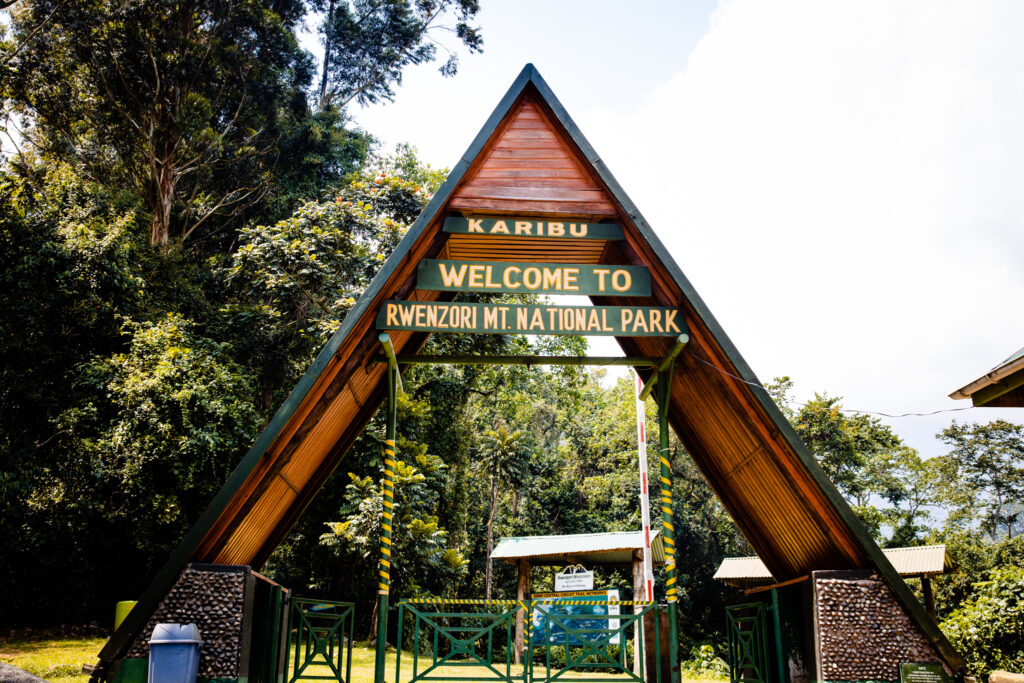
At one point, It was necessary that all other tourism businesses and enterprises should be able to fetch visitors directly from outside the village rather than depending on Ruboni Community Camp efforts. This is the point when the idea of mapping started forming in the minds of the local tourism players. This was a mission to change the old tune to ensure that there is more inclusiveness and full community involvement in community tourism. This team of thinkers chose to consolidate the entire village’s tourism potential and to sell it as one. Ruboni Community Conservation and Development Program (RCCDP), the founder of Ruboni Community Camp has been the leader in nurturing this idea for one year since May 2022.
The recognition of Ruboni tourism village potential by The Best Tourism Villages of UNWTO, in 2021 was the gateway to hatching the consolidation idea. This recognition was a result of the joint efforts by several stakeholders including; Ruboni Tourism Village, Uganda Community Tourism Association (UCOTA), Kasese District Local Government (KDLG), The Ministry of Tourism Wildlife and Antiquities (MTWA), and the local tourism players. Shortly after, as the village was participating in the UNWTO exchange programs with other like-villages around the world, Open Street Mapping came top on the list of priorities.
Ruboni Tourism Village has therefore had to go digital. The first step was taken in May 2022, when the Humanitarian OpenStreetMap Team (HOT) and East and South African Hub (ESA HUB) provided technical and financial support under a one-year partnership. The project; Mapping Ruboni village tourism attractions; accommodations, tourist trails, and tourism centers, on Open Street map to enhance their visitation and competitiveness in regional tourism has been implemented under this partnership.
This addition of Ruboni on open street mapp has been a manifestation of small beginnings and innovations leading to changing the entire game. The results of mapping are already making life very easy for the whole lot of travelers, and village residents. The youth are now aware of their tourism development roles, all tourist businesses are able to add themselves to the map and other digital promotion tools, and the tourism players are now able to collectively solve their tourism marketing challenges. Travelers have started navigating this part of the region with ease and we anticipate that the numbers will grow with time. The inclusion on the Open street map is enabling travelers to find the travel goodies hidden in this Rwenzori foothills village, off the Kasese – fort portal road.
It cannot be overemphasized that Fort Portal – Kasese Road is the ideal route for travelers who want to explore a true Ugandan heritage in nature, scenery, and culture. It runs north and south of the Albertine rift valley. This makes it one of the leading tourist routes in Uganda and a key part of most trips running between Queen Elizabeth and Kibale National Parks. This Positions Ruboni Village in a strategic tourism location
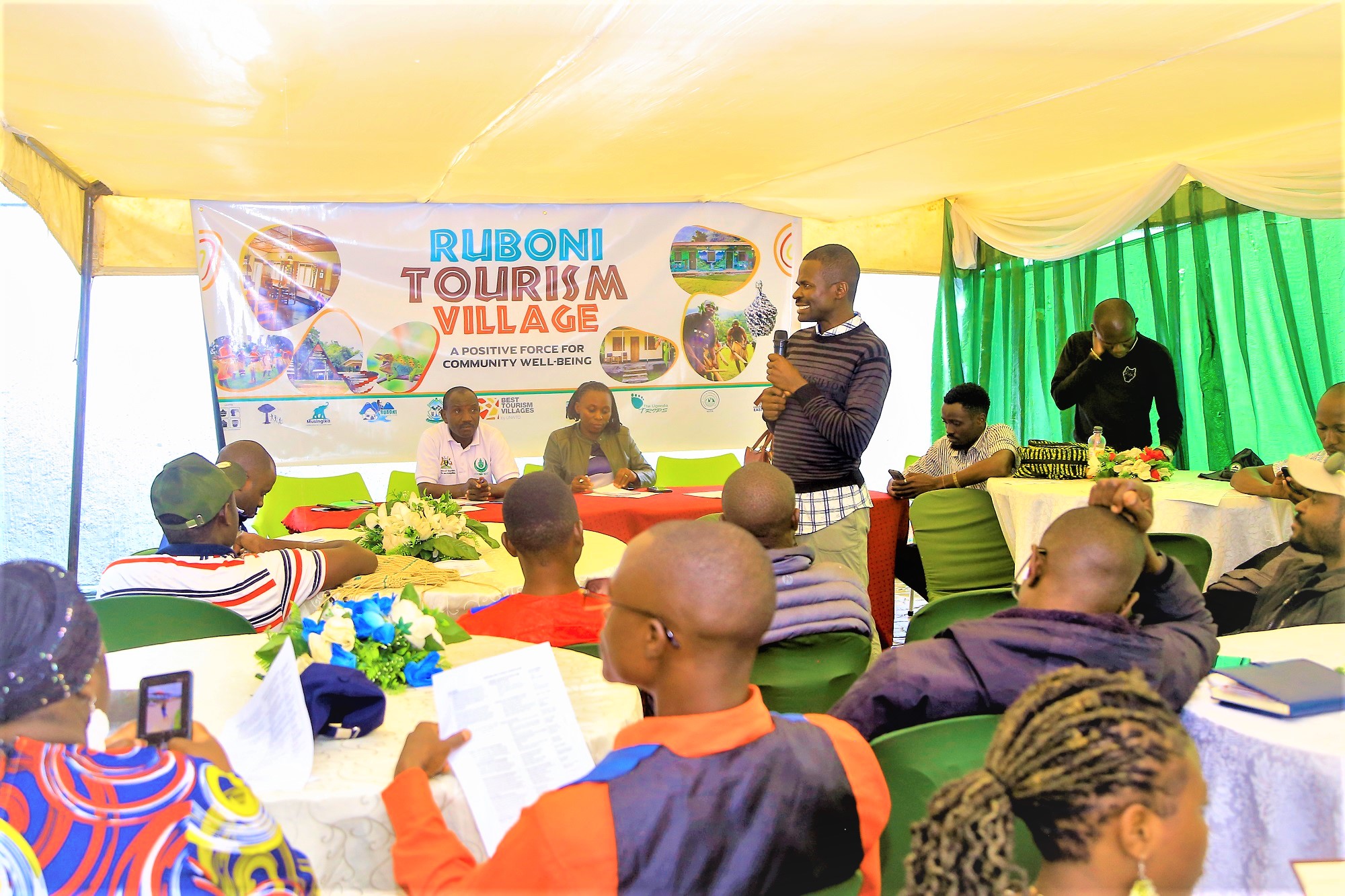
The Albertine is a hotspot of Uganda’s key National parks. This road, therefore, connects Albertine’s tourism potential. It connects seven of ten of Uganda’s National Parks; Murchison falls, Kibale, Semuliki, Rwenzori, Queen Elizabeth, Bwindi, and to the far south, Mgahinga Gorilla National Parks. Besides the many wildlife parks, this route connects a whole lot of cultures in close to 20 tribes in three kingdoms/ regions of Kigezi, Rwenzori, Tooro, and Bunyoro.
It is evident that the digital inclusion of Ruboni Community Camp, tourism village and such a rich tourism mix was way overdue. By now, we can confirm that the addition of the village on the open street map has brought to light, another great holiday and livelihood opportunity making it easy and a great reason for every responsible traveler to visit this part of the country.
As you may be aware, the Ruboni tourism village was selected by UNWTO as one of the top 20 villages with the potential to become an outstanding top-tier rural tourism destination. UNWTO chose Ruboni to undergo an upgrade program to help the village achieve its full sustainability potential. We are currently working so hard to use this opportunity to make Ruboni a “Best tourism village” to the UNWTO standard.
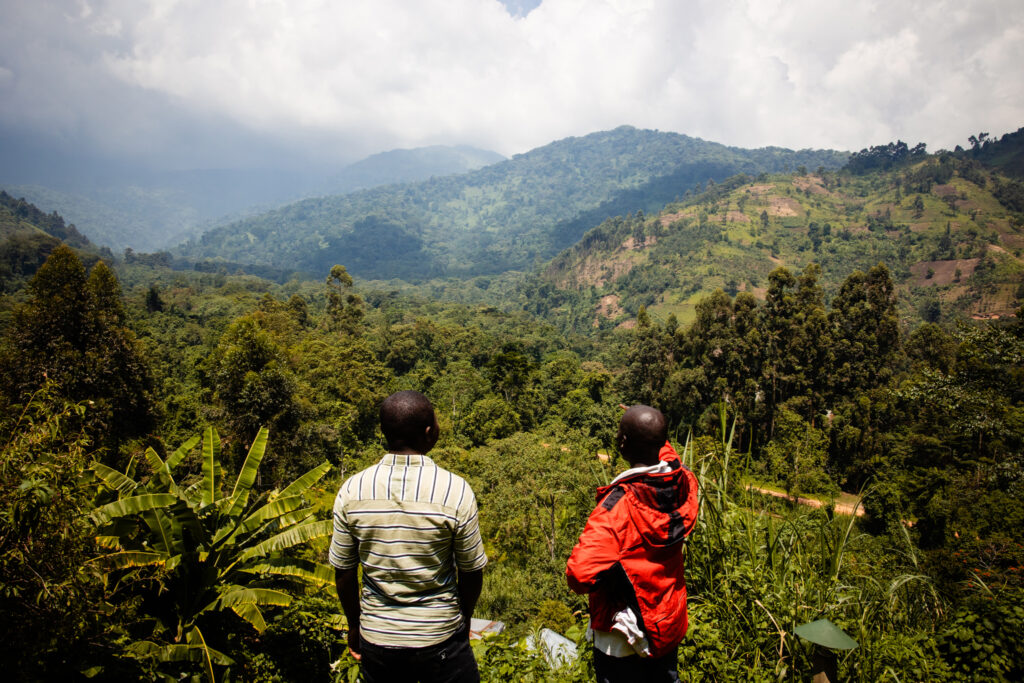
Upon seeing the news, Many friends and supporters of Ruboni have been wondering or even asking us how they can support us to make it to the top. Now I have the answer, we need to join hands and work together as lovers, beneficiaries, and supporters of Ruboni Village. This is how each one of our friends and supporters can contribute to the success of Ruboni tourism village by enabling us to get to the top of the UNWTO criteria.

Ruboni tourism village is excited to explore the opportunities provided by the UNWTO under the best tourism villages program. One of the ways the village is looking to focus on is by building local and international partnerships. This will enable the village to carry out product development, implement sustainable tourism, and increase visitor numbers and visitor satisfaction. When the visitor number to Ruboni village can increase, the village will be able to benefit from the resulting incomes; some of which will be reinvested in tourism, conservation, and local development initiatives.
In 2021, Ruboni village was selected and recognized by the United Nations World Tourism Organization (UNWTO) as one of the top 20 villages with the potential to become an outstanding top-tier rural tourism destination. UNWTO chose Ruboni to undergo an upgrade program to help the village achieve its full sustainability potential.
As a result, Ruboni Village is currently participating in the UNWTO best tourism villages upgrade program, to be able to cover the gaps identified during the selection. After the successful completion of the upgrade, Ruboni village will be required to apply again with the hope that the village can get recognition as the best tourism village.
Ruboni tourism village recently attended the UNWTO general meeting. During this meeting, we also kick-started the mentorship program. This mentorship program conducted by Professor Joseph Mbaiwa and supported by UNWTO best tourism villages will see Ruboni set strategic goals and activities to cover the existing sustainability gaps as a way to meet the UNWTO sustainability standards of the best tourism villages initiative.
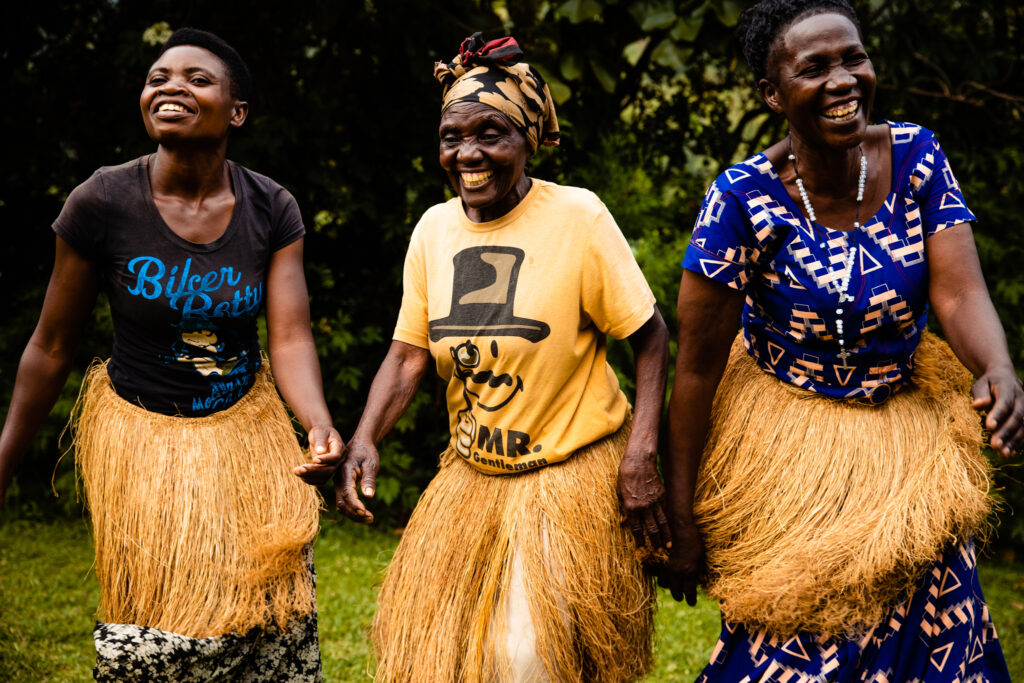
Current and proposed activities to develop the tourism village
· Creation of a village tourism committee
· Mapping the tourist attractions of the area
· Creation of a community visitor center
· Stakeholder engagement
· Creation of private-public partnerships for equitable development
· Product development drives
· Increased tourism marketing
· Licensing the hotels and guides in the village
· Increasing accessibility to technology/computer/ internet
· Tourism training and capacity building for the staff and service providers
Ruboni is a remote mountain village where the majority of the people never travel outside their village. Lack of exposure affects this village’s awareness levels, mindset, and attitude about tourism, conservation, and community development. It also leads to an inability to meet guest expectations in relation to sustainability and customer satisfaction in many service areas ranging from product development, reservations management, guest services, and all other aspects.
We intend to explore exposure and training programs for a cross-section of community members including the service providers, local government leaders, and key village residents of Ruboni tourism village. This will best be done through local study trips, international partnerships, exchange programs, and technology enhancement through computer and internet access by the local residents.
On our goal of creating international partnerships, we have one opportunity we want to explore. We intend to attend an international event organized by the Municipality of San Ginesio, Italy – 14-16 July 2023 that will take place in Italy. This event will be attended by all the Best Tourism Villages network members across the world. These include the best tourism villages, tourism ministries of the countries where they come from and all villages under the upgrade program.

We intend to send two people from Ruboni to attend the event; The Ruboni tourism village coordinator as the focal person and the village mayor. The event will involve local tours, networking sessions, and a B2B session aimed at creating synergies for global partnerships and exchange programs between the different Best Tourism Villages worldwide.
On this trip to attend the networking event in San Ginesio, Italy – 14-16 July 2023, We have so far acquired the invitation for the two participants from the municipality of San Ginesio. Local transportation, hotels, and event attendance are also already covered.
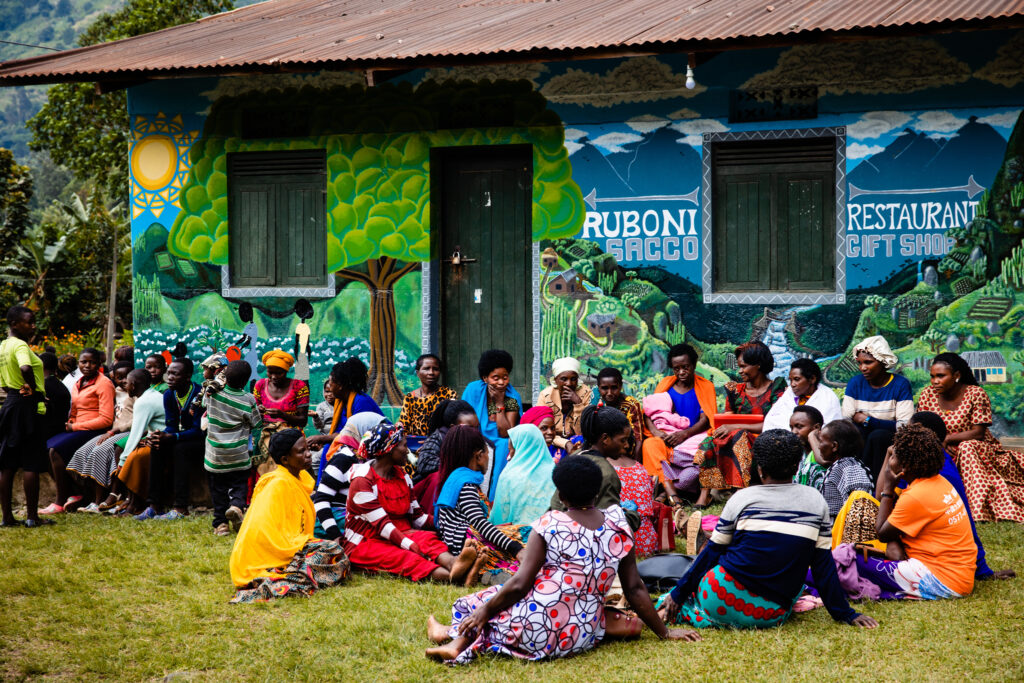
We are lacking two return flight tickets for two village representatives to attend. It is in this particular area we need support from well-wishers and supporters to enable Ruboni Village to send the intended two representatives. The tickets and associated costs will be 2500$.
During the event, the Ruboni village representatives will participate in the tours, networking sessions, and a B2B event aimed at developing international partnerships and exchange programs between the different governments and tourism villages. We are particularly interested in creating a staff exchange program targeting the youth so that we can create learning and practicing opportunities in a cross-section of tourism, conservation, and development careers.
The last time we held a tree-planting event was in October 1919. By then, it was a culture to collectively plant some trees as a community every year. This initiative enabled the Ruboni community to reforest tens of acres in the Buraru forest landscape and other communities outside of Rwenzori Mountains National park.
In 2020, when covid19 set in, it shuttered our annual tree-planting dream. Like everything was closed for two years, convergence as a community was also banned. It was through collective community work that we used to plant trees. There was no way; we would plant trees without creating a crowd. 2020 was a candle of hope blown off for our conservation project through tree planting.
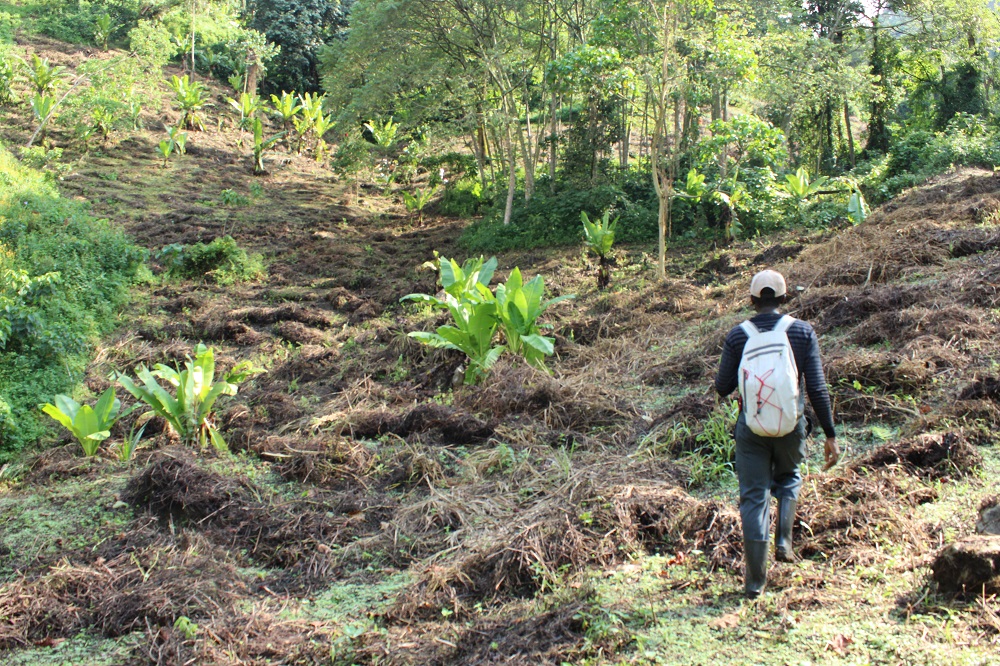
Along with closing crowds, our tourism business, the largest contributor to tree planting, was also closed for almost two years. This further disturbed us when we realized that we can’t even raise one coin to facilitate the tree-planting activity. When tourism started to open up in 2021, our hope woke up, that maybe one day; we shall have the joy of raising some money, getting partners and planting trees again.
In 2022, our dream got closer. We kept promising ourselves and the other community members that we will plant trees. This was even before we had the money and partners. Luckily, in the course of the year, we received some partnership opportunities. Along with that, we had started receiving guests and our debts were getting manageable, meaning our dream was getting closer. July and August 2022 were the wake-up months for our tree-planting dream. We got two partners willing to join hands on tree planting. these two important meetings were held at the Ruboni community camp. This meant that the time had come and we were set to resume our annual tree-planting event.
7th October 2022 has been the first time to plant trees collectively again, since the emergence of covid19. It was a landmark day and a rare opportunity for the community to get together for the environment. This was the rebirth of the tree-planting events. It is a day worth celebrating and remembering in our story of tree planting and forest conservation. Indeed, this event opened a series of tree planting days that will take place through the month of November 2022 while we still receive the rains. We intend to plant up to 15000 trees in the Ruboni community forest by the end of the month.
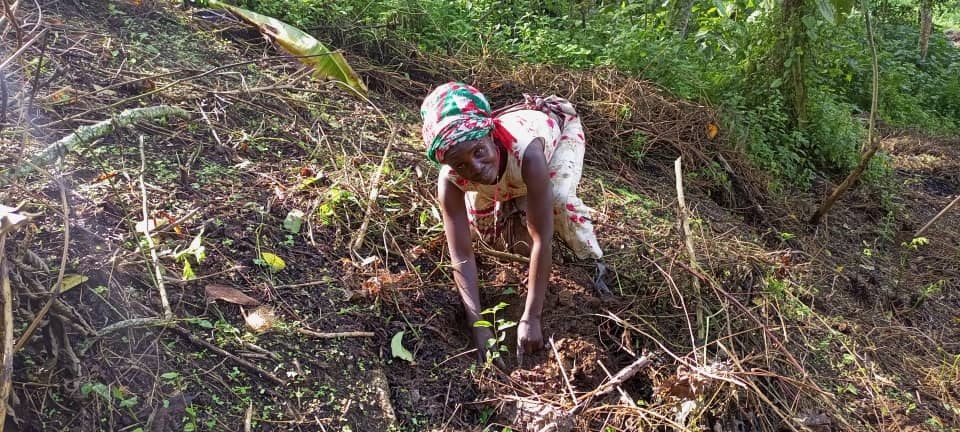
We took mobilization through public places such as churches, trading centres and interpersonal word-of-mouth communication. A simple poster was developed and distributed in these channels. The poster was also shared on Facebook and several WhatsApp groups. In the end, 50 people attended the event. Of the 50, 19 were women, 31 were men and 39 were youth. In total 3800 trees were planted in a vanity of four indigenous species
The logistics were simply getting the team of locals to do the voluntary roles. We provided facilitation for some activities, but 90% of the organization work was done freely by the local youth tourist guides. We partnered with the community visitor centre to hold the seedlings, host us and prepare the meals.
During the tree planting event, we offered meals and refreshments. In reality, a special meal was offered to welcome the local community members from the long day of planting
Most of the trail is not motorable. The seedlings were carried on the back. Using gunny bags and traditional straw baskets, the men and women carried the seedlings to the planting site, on a rugged journey. From the community visitor centre where the trees were stored, the 3km trail was all walked. It crosses river Mubuku and other small streams over the hills.
Shortly after we finished planting and set foot at the community visitor centre, our converging point, then the rain started. It was a heavy downpour with the wind. It was as if to separate the planters from none planters. The planters were squeezed into one hut like the 12 disciples on Pentecost day. All people were locked in one hut under the dark atmosphere and the wind pressure. Our trees have gotten watered, was a statement made by everyone in the hut. Yes, the trees were just getting introduced to the new life that we had given them in the forest.
Lunch was served and it turned out to be the biggest lunch for all the planters. Most people eat but wished they had come with their families. After the meal, we listened to three speeches; from the coordinator of the project, the chairperson board of directors of Ruboni Community Conservation and Development Program (RCCDP) and the chairperson of the Local council one. This then marked the end of the day.
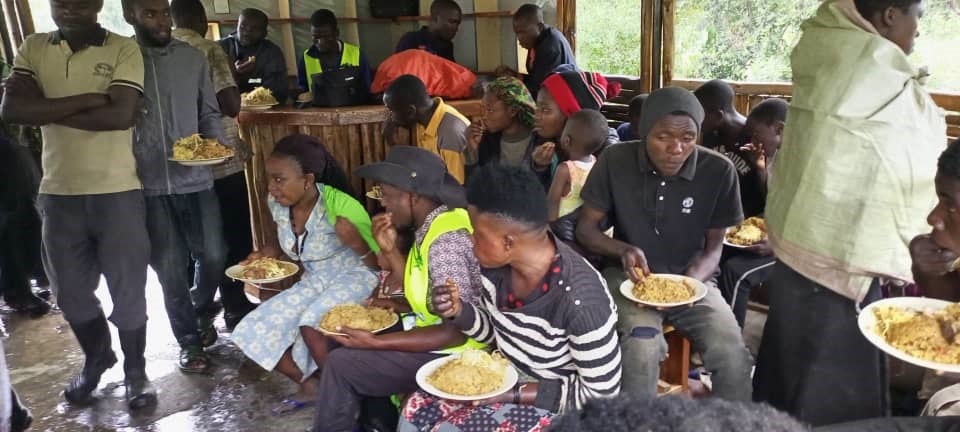
Everything important for a mother is super important for the community and nation. Indeed, whatever makes a mother put a baby down is a significant activity. This tree-planting event happened to be one of those few important activities. We were impressed when we saw a number of mothers put down their babies to carry big sacks of seedlings on the 3km trail heading to the planting area. Mothers likely already saw the need to plant trees, had missed the tree planting events very much or needed to put food on the table back home.
This is fun that runs throughout the year through raising seedlings, planting trees and tending to them. The result is always the biggest of all. After about three years, the planters and communities can already walk under the canopy of the planted trees being celebrated by the birds and other wildlife.
Everyone can be part of this achievement and the fun of planting trees. Every year we have tree-planting events. These tree-planting events are run during the rainy seasons of April-May (the short rains) and August – November (the long rains). Between the rainy seasons, in the months of June, July and December to April, we are normally tending the trees to ensure they grow well. The tending activity includes; staking, weeding, watering or refilling the gaps of dried trees.
These non-planting months are the tourist peak seasons of the Rwenzori Mountains treks. We, therefore, invite travellers to participate in our tree-planting projects during their visit to Uganda and Rwenzori.
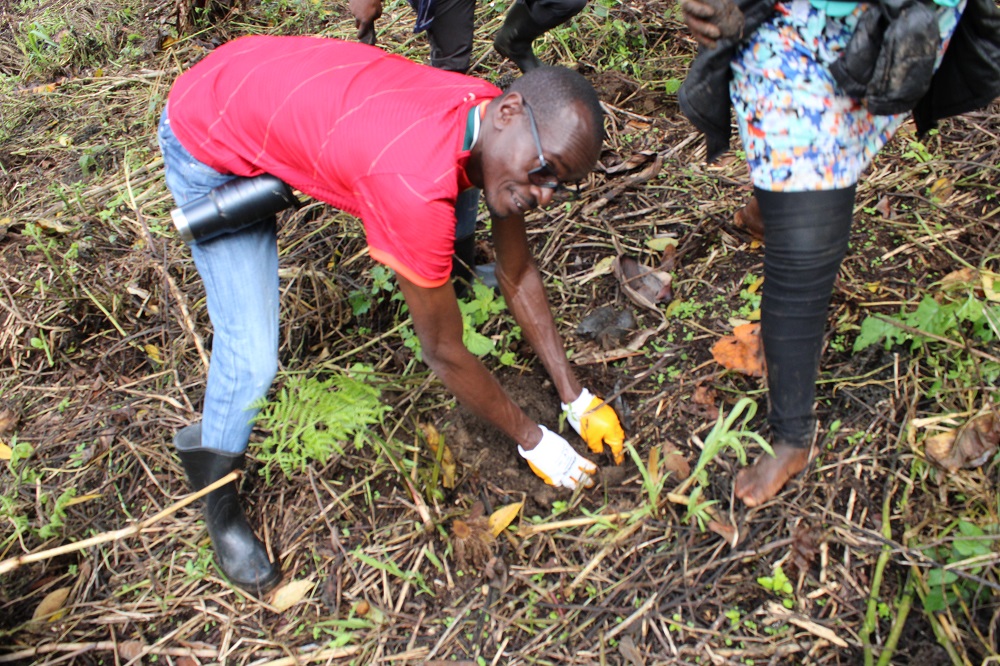
At this moment, there is nothing more important than conserving the environment. Planting trees and landscape restoration are one of the major conservation activities that we have chosen to take on in our communities. We are inviting well-wishers and partners to join us in this noble journey in the different ways below;
For further information, you can contact our tree planting coordinator who will give you more information
A team of youth guides from Ruboni village have recently taken a fact-finding tour on tourism product development. They toured the entire Rwenzori gateway for two days. This tour was on the 21st and 22nd of October 2022. It was to visit the existing and potential tourist attractions in the area.
Up and down the valleys of the scenic Rwenzori foothills, the team found a list of up to 25 potential tourist attractions. They were guided by the local leaders and residents. These newly found attractions will be added to supplement the traditional tourism activities of the area. The aim is to enrich the attractions and tourism potential of the Rwenzori Destination.
The just-concluded tour was part of the Ruboni community’s involvement in the tourist attraction mapping activities. The mapping activity will see Ruboni village tourism attractions featured on the Open street map. This mapping activity is being supported by the Humanitarian OpenStreetMap Team (HOT).
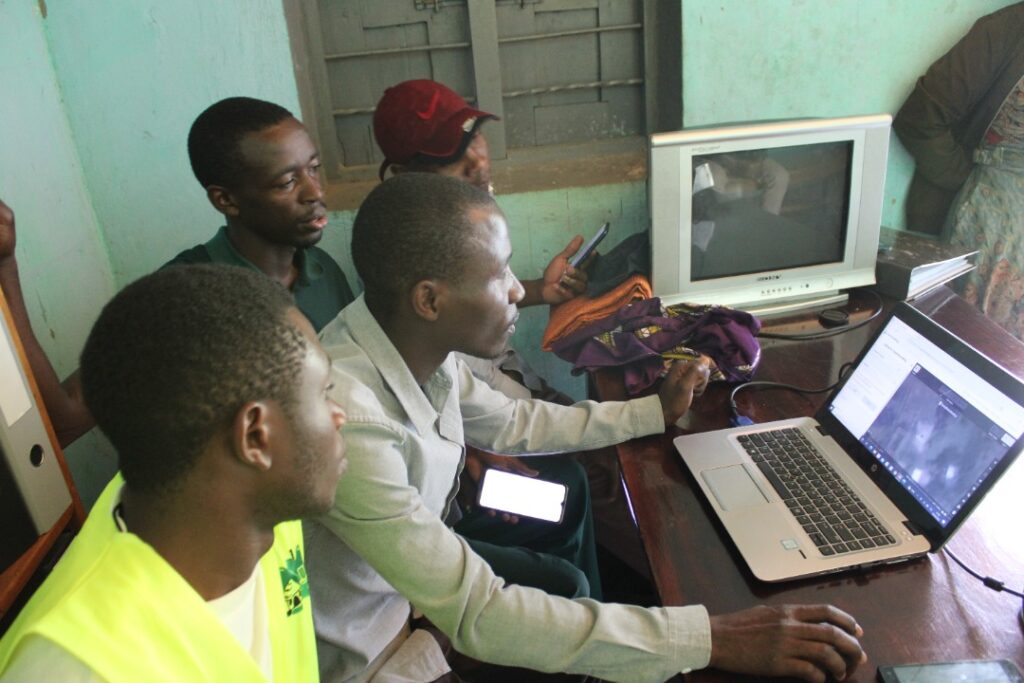
Under this mapping initiative, a team of local youth and tourism stakeholders have participated in a series of activities. The acrtivities include; collecting data, engaging stakeholders, and preparing the local tourist attractions of the Rwenzori gateway area. The attractions to be mapped include;
Besides actual mapping, the project has trained a number of youths and other tourism stakeholders how to map and/or edit data on the open street map.
The Rwenzori Mountains are popular for the experience of trekking high mountains. However, as the industry grows, majority of the tourists seem to not able to make it to the mountains. Majority of the travelers don’t have the time, energy or budget to trek the high peaks. This leads to low destination visitation. Besides Trekking the Rwenzori Mountains, Ruboni community has started offering three village guided tours. these are; Ruboni hill climb trek, Ruboni forest walk and Ruboni village walk. These tours are mainly promoted to none climbers visiting the villages in the foothills.
Indeed many guests have found the Ruboni village guided tours interesting and a highlight of their Uganda tour. Only one challenge, these three tours can be done in only two days. As a result, guests have failed to stay longer when they fail what to do with more days during their stay. This is especially if they don’t want to go to the high peaks of Rwenzori. This is the reason for exploring more activities to offer to the tourists willing to stay longer in Ruboni village.
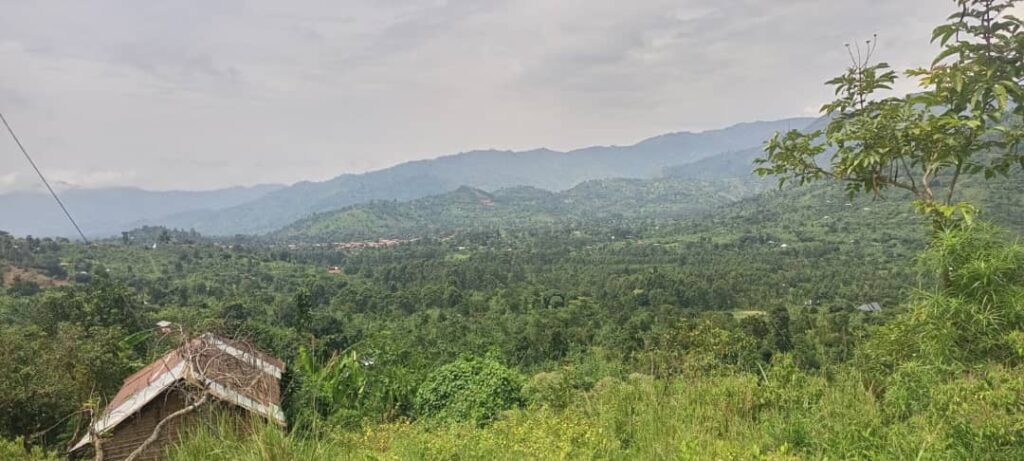
After this initiative of the youth, guests will now be able to stay longer in Ruboni village. During their stay, they will have the opportunity to explore these newly established cultural activities. In a few months, this map will be available online to guide all guest. It will be on the website of Ruboni community camp and other stakeholder platforms. The map will also be available in hard copies in the local shops within the village and around Uganda. An online APP will be created to supplement the map, for guests who will be using mobile gadgets during travel.
The establishment of more cultural encounters will definitely push the Ruboni community higher on the list of undiscovered destinations. The new attractions include;
The youth want guests to stay longer in Ruboni village. This is so that they can learn more about the local nature and culture of Rwenzori. When they stay long, they possibly spend more money into the local businesses. This will boost the local economy, create employment and reduce rural urban migration among the youth.
The location of Ruboni village gives it a plus in tourism potential. The location on the only tourist route (Kasese-Fortportal road) makes it is easy to reach Ruboni village destination, Their route runs through the Albertine rift linking over five national parks including;
This fact-finding tour was a follow-up visit after several individual meetings with local government officials. The earlier visits were aimed at sensitizing the leaders about mapping the tourist attractions in the gateway. In those earlier meetings, Ruboni community discussed this tourism mapping initiative with a selection of officers. These said officers include the chairpersons LCIII, town agents, community development officers and other members of the councils, who overwhelmingly appreciated the idea and promised to cooperate.
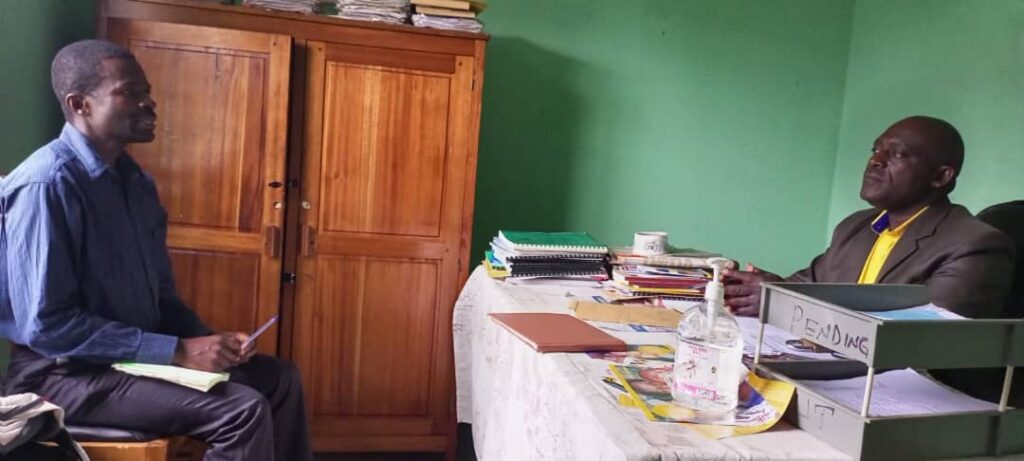
During the meeting earlier before this visit, each council identified one representative to be the contact person in charge of the mapping project. It is with these representatives that our youth guides met and toured the areas of focus visiting the said tourist attraction. During the visit, the guides were impressed to find a wealth of attractions in the area.
Formally, Ruboni village has only marketed the Rwenzori trekking experience along the few village guided tours. Besides the trekking, the area has got a few lodges that provide accommodation to the staying guest. The main lodges, including Ruboni community camp the pioneer and leader in hospitality services. other lodges include, Equator snow lodge, Rwenzori turaco view camp, Tours holiday Inn, and Rwenzori Homestay
If you’re wondering what is the difference between the Rwenzori gateway and Ruboni tourism village, I will explain a little. The Rwenzori gateway is a bigger area where the Ruboni community village is located. The gateway is a consolidation of five local governments in a beautiful hilly landscape. The area includes three town councils and two sub-counties.
Guests going to Ruboni community drive through the Rwenzori gateway to the end where Ruboni community is located at the park gate. The gateway is a must-visit area for people who want to explore unique nature and culture in a rural setting. Being serviced by good marram roads, electricity and running water, it is an ideal holiday spot. The local community has put this area into one community tourism block called Ruboni tourism village. This way, all people going to the Rwenzori gateway, will be visiting Ruboni tourism village.
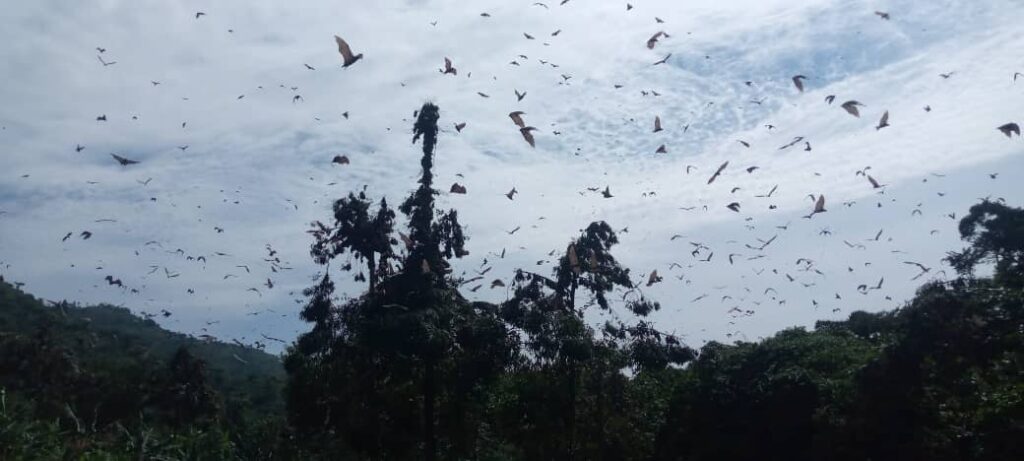
The name Ruboni means clean water. It comes from a local river that drains into river Mubuku next to the Nyakalengijo gate of Rwenzori Mountains National Park. This river was always believed to be clean and village members used to keep it clean and reserved it for drinking water before the taps and springs were constructed by the government. River Ruboni is located 1km before Nyakalengijo central circuit gate of Rwenzori Mountains National park; the oldest and most popular trail of this national park gives easier access to the high peaks of the Rwenzori Mountains including margarita peak. This makes Ruboni village the ideal starting point for every trek to the high peaks of the Rwenzori Mountains.
Ruboni tourism village is popular for agriculture due to the fertile soils on these hills and valleys supplemented by plenty of water sources. During your stay, you can be assured of local organic food ingredients. The mouthwatering delicious meals prepared by the local chefs will leave you puzzled when you stay at Ruboni community camp. Being inhabited by five tribes makes this gateway area a cultural hub where guests can experience different cultural encounters in one destination. The tribes that live here include; Bakonzo, Bakiga, Batoro, Bafumbira and Banyarwanda.
The tour and mapping activity will make Ruboni tourism village more prepared for the UNWTO tourism development intervention. Mapping is a best practice that has been identified in other tourism villages globally. With the map both in hard and soft copy, it will be easy for the guests to plan and explore their trips in the village. The increased activities will allow the visitors to stay longer, just like the increased room/ bed capacity will increase choice and confidence in the availability of accommodation at all times.
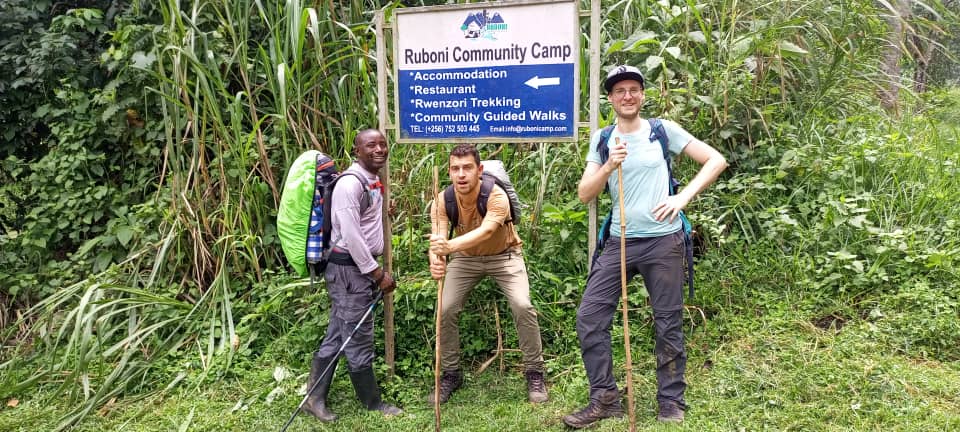
Guests to Ruboni Community CampBesides mapping, the village will be branded and all attractions signposted. A series of local site training will follow this to the service providers through the local partnerships that will be established during and after this collective mapping project.
To know more about this youth tourism development initiative, the mapping activity and how to visit Ruboni tourism village during your safari in Uganda, please contact us at Ruboni community camp via email or WhatsApp: +256752503445